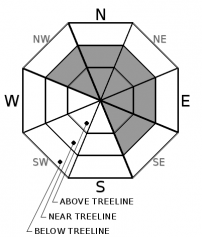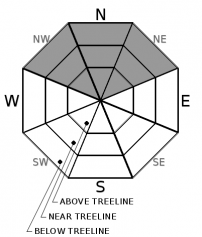| Monday | Monday Night | Tuesday | |
|---|---|---|---|
| Weather: | Partly to mostly cloudy. Slight chance of snow in the afternoon. Snow levels below 7000 feet. Chance of precipitation is 15%. | Partly cloudy. Slight chance of snow. Snow levels below 7000 feet. Chance of precipitation is 15%. | Partly cloudy then becoming sunny. Snow levels 7000 feet. Chance of precipitation is 5%. |
| Temperatures: | 38 to 44 deg. F. | 25 to 30 deg. F. | 42 to 48 deg. F. |
| Mid Slope Winds: | Southwest around 15 mph with gusts to 35 mph. | Southwest around 15 mph with gusts to 35 mph. | Southwest 15 to 20 mph with gusts to 35 mph. |
| Expected snowfall: | Up to 1 inch. | SWE = trace amounts. | Up to 1 inch. | SWE = less than 0.10 inch. | No accumulation. | SWE = none. |
| Monday | Monday Night | Tuesday | |
|---|---|---|---|
| Weather: | Partly to mostly cloudy. Slight chance of snow in the afternoon. Snow levels below 7000 feet. Chance of precipitation is 15%. | Partly cloudy. Slight chance of snow in the evening. Snow levels below 7000 feet. Chance of precipitation is 10%. | Partly cloudy then becoming sunny. Snow levels 7000 feet. Chance of precipitation is 5%. |
| Temperatures: | 33 to 39 deg. F. | 23 to 28 deg. F. | 37 to 43 deg. F. |
| Ridge Top Winds: | Southwest 20 to 30 mph with gusts to 55 mph. | Southwest 20 to 35 mph with gusts to 70 mph. | Southwest 25 to 40 mph with gusts to 70 mph. |
| Expected snowfall: | Up to 1 inch. | SWE = trace amounts. | Up to 1 inch. | SWE = less than 0.10 inch. | No accumulation. | SWE = none. |





















